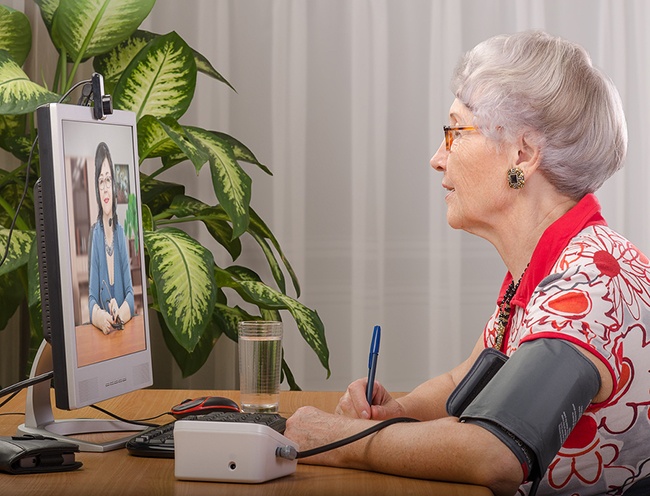Can a Medical Assistant Work in Telehealth?
Posted On May 2,2018

Advances in technology are making it even easier for people to have access to healthcare. Telehealth allows patients to see a doctor remotely. That means physicians to treat patients whenever needed and wherever the patient is, by using a computer or smartphone.
And, every good doctor needs an expert medical assistant standing by to help get the job done as much remotely as in the office. More and more medical assistant
MA Duties
The role of a medical assistant working in telehealth is very similar to an MA working in a physical, brick and mortar medical clinic or doctor’s office. Medical assistants are cross-trained to perform administrative and clinical duties. Duties of a medical assistant working in a Telehealth role may include:
- Providing patient education, patient support, and patient care via a telehealth platform as an extension of the physician practice
- Serves as a liaison and coordinates information between providers, other clinical staff, and patients
- Coordinates patient care plans
- Completes and initiates appropriate clinical reminders, consults, and alerts.
- Documents all clinical observations, information, updates, and patient education
- Schedules, confirms and coordinates non-face to face patient encounters
Telehealth Technologies
Providers and patients have several categories of telemedicine technologies to choose from. These can include:
Store-and-forward telemedicine – This involves the transmission of medical data to a physician or medical specialist for assessment. This would include things like x-rays, photos, and pre-recorded videos. The practitioner then uses the information to evaluate the case outside of a real-time or live interaction. The presence of both parties at the same time is not required, making store-and-forward telemedicine popular with such specialties as dermatology and radiology.
Live video – This is live, two-way interaction between a patient and a healthcare provider using audiovisual telecommunications technology. This type of service is also referred to as “real-time” and may serve as a substitute for an in-person encounter when it is not available due to a number of reasons including location or movement limitations due to poor health. Live video can be used for both consultative and diagnostic and treatment services.
Remote patient monitoring (RPM) – This allows a patient to remain in their home and community, without having to physically go to the providers’ office. Personal health and medical data is collected from a patient in one location via electronic communication technologies. The information is then transmitted to a care provider in another location. This type of service allows a provider to continue to track healthcare data for a patient once released to home or a care facility.
Mobile health (mHealth) – This technology includes health care, public health practice and education supported by mobile communication devices such as cell phones, tablet computers, and laptops. Services can range from healthy lifestyle text messages to alerts and warnings making patients aware of specific disease outbreaks.
Advantages of telehealth are not limited to the patients and physicians. Medical assistants can also reap the benefit of improved efficiency in their jobs, reduced exposure to communicable diseases, and calmer patients due to reduced wait times. Telehealth makes what can be seen as the downsides of a medical assisting profession a thing of the past.
If becoming a telehealth medical assistant sounds interesting to you, contact Athena Career Academy. We can help you select the right program to get you on the road to an exciting career.